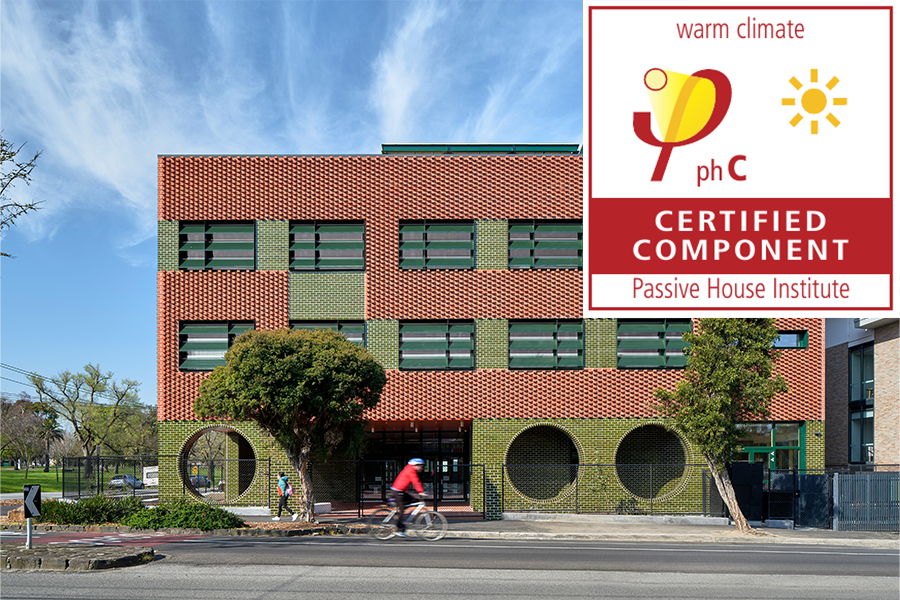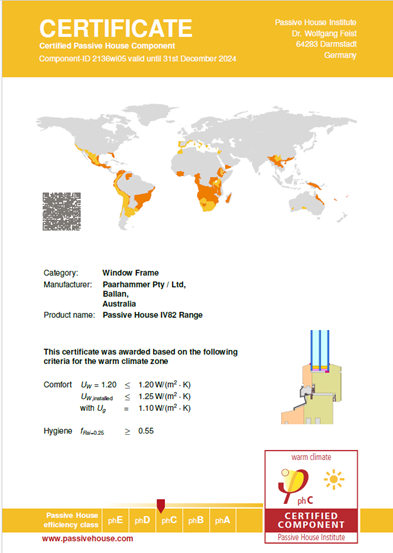Paarhammer will be closing at 12pm Tuesday the 23rd of December 2025 and we will reopen on Monday the 12th of January 2026. We would like to wish all our clients and suppliers a happy and safe holiday period.
Click here to view our latest blog
About Passive House

Certified Passive House residential or commercial buildings involve a set of very high-performance standards to achieve both thermal comfort and high levels of energy efficiency. Originating in Germany in the 1980’s, the idea is to maintain comfortable internal temperatures without the need for excessive heating and cooling, thus decreasing the cost of energy usage for the life of the building.
Passive House is a voluntary building standard chosen for a variety of reasons such as a reduced carbon footprint, increased air quality, reduced noise and more. In many countries, organisations have now formed to further this building standard. In Australia this is the Australian Passivhaus Association.
‘Passive House’ or ‘Passivhaus’
When the German term ‘Passivhaus’ was translated into English, it became ‘Passive House’. This was also the name of the Australian Passive House Association (APHA) when it was established here in Australia in 2013, but in 2022, this name was changed to Australian Passivhaus Association (APA). In essence, both terms mean the same, but for international component certification, the term ‘Passive House’ is being used as this certification is done in Germany.
Australian Passivhaus Association

The Australian Passivhaus Association (APA) is an independent, not-for-profit organisation that aims to promote the Passive House Standard in Australia, raise awareness, advocate its use, and provide education to the building industry.
APA’s vision is ‘that all Australians live and work in healthy, comfortable, low-energy, resilient buildings’. Paarhammer joined APA as a member already in 2016, and now has 2 qualified Passivhaus Tradespeople on staff.
According to APA, the focus is on super insulated building envelopes, airtight and thermal-bridge-free construction, mechanical ventilation with heat recovery, and high-performing windows and doors. These window products should be used in a variety of sizes suitable for each different elevation to achieve solar heat gain in winter, but not let too much solar radiation into the building in summer. They also need to seal very well for airtightness.
The Association has a range of criteria which is used to test homes and buildings for certification. For instance, an airtightness of 0.6ACH50 or less is required for certification, which is less than 0.6 air changes occurring within an hour. Ordinary buildings often have up to 14 changes of air during the same time, all of it needing to be heated or cooled.
Other criteria for certification include indoor temperature, heating and cooling demand, humidity, and energy demand. Passivhaus certification is also location-specific, as Australia has a range of variable climates.
Passive House Component Certification

The Clifton Hill Primary School featured above incorporates windows and doors from the Paarhammer Passive House Range, which achieved International Component Certification by the Passive House Institute in Darmstadt. This window range has been tested and approved based on its suitability for certified Passive Houses, thereby supporting the designer’s task of choosing high-quality components, and these windows and doors are made right here in Australia.
Thermally efficient buildings
Homes or commercial buildings that are thermally efficient offer a comfortable and energy-efficient indoor environment without the high temperature variations experienced in standard buildings. You can go a step further and have your residential or commercial building certified by an independent certifier to the Passive House/Passivhaus standard.
Ready to talk Passive House windows and doors? Contact us